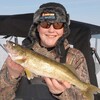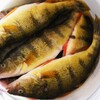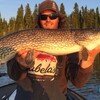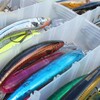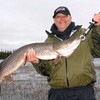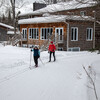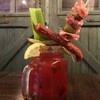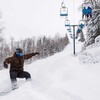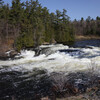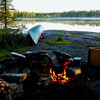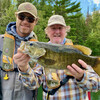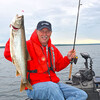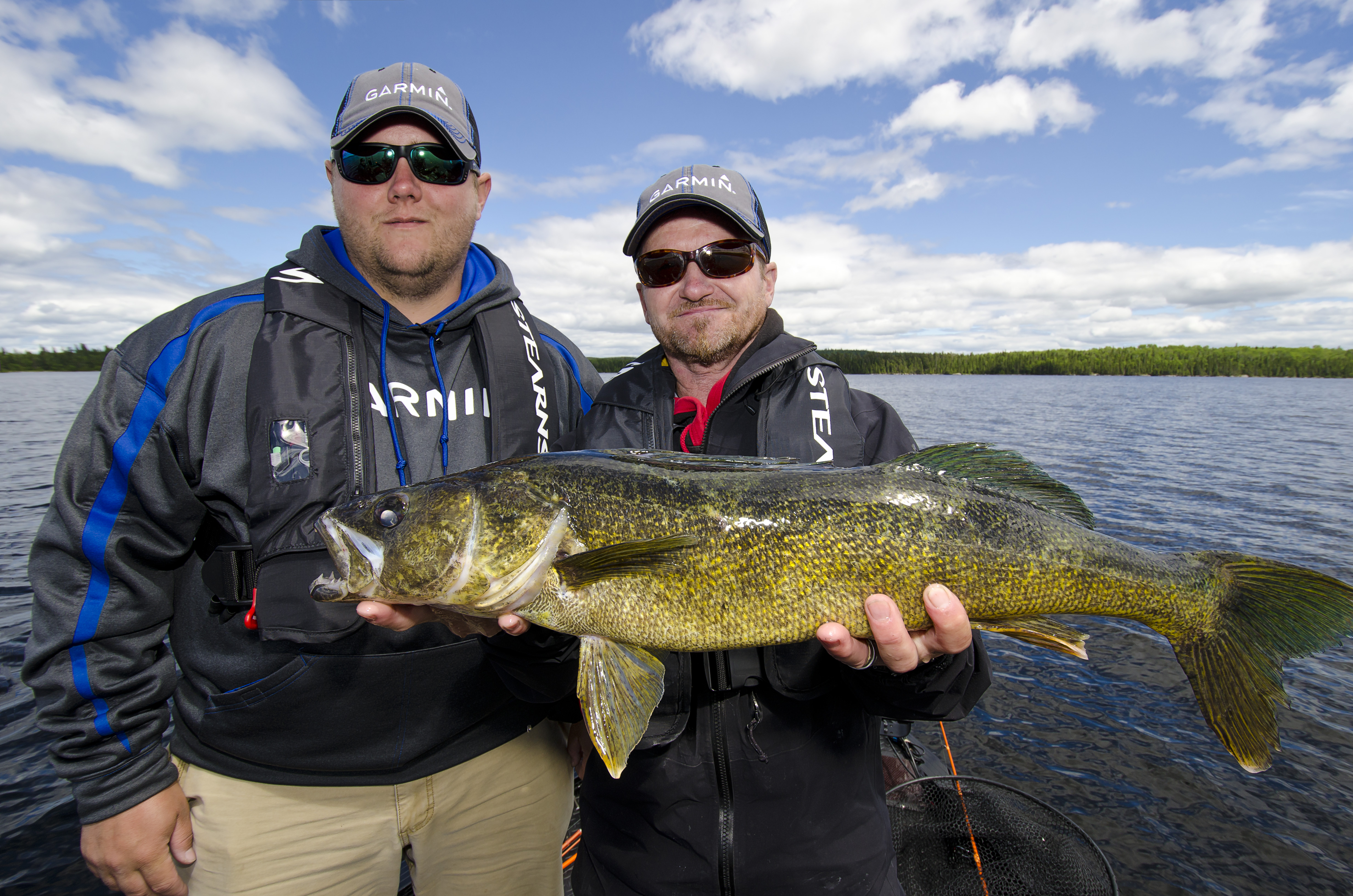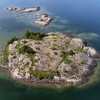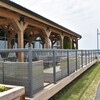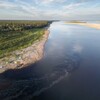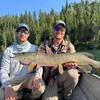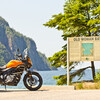
How to Use Trolling Attractors for Lake Trout
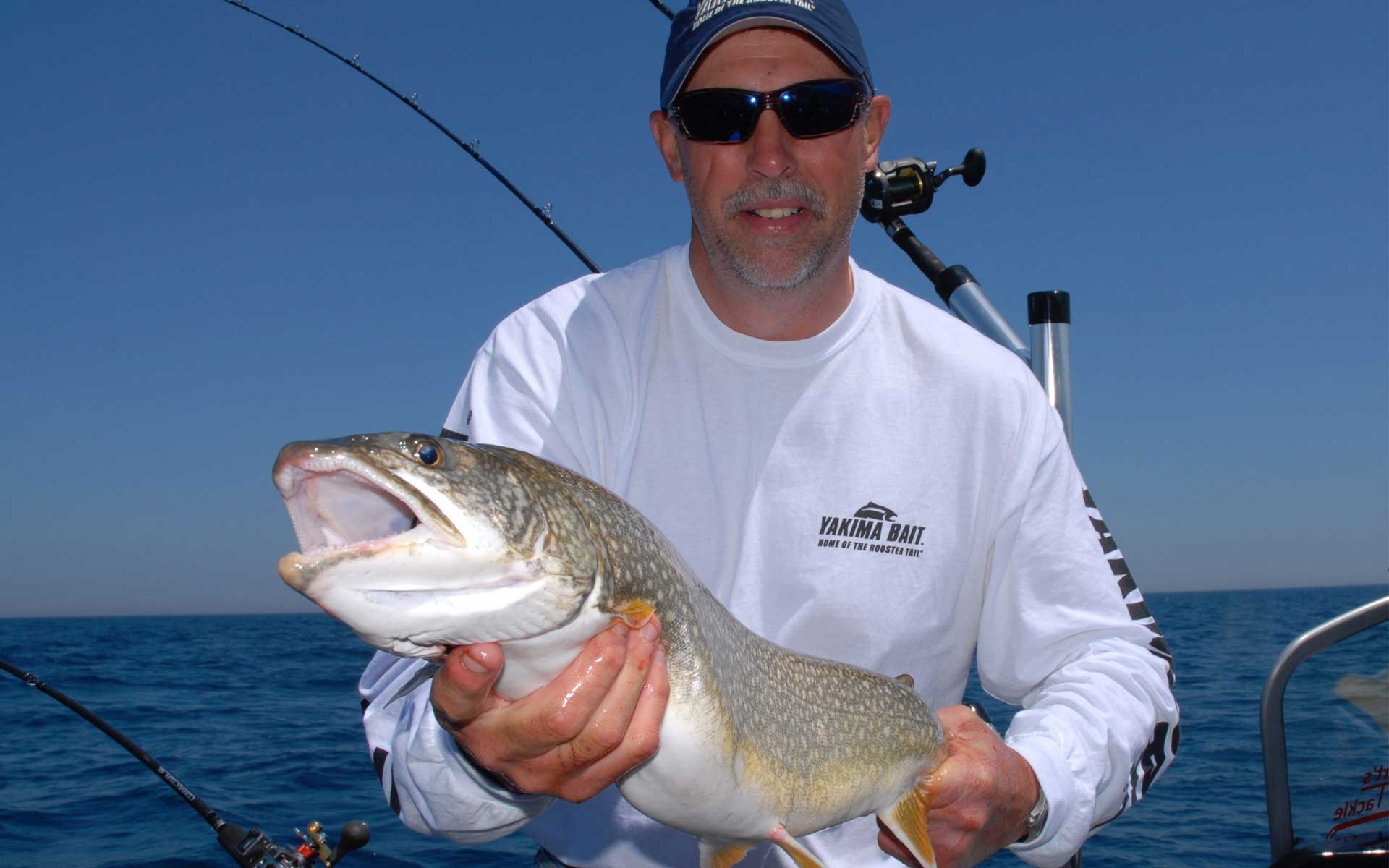
Lake trout, or gray trout as many call them, aren't trout at all! Actually, lake trout are members of the char family and like all chars, they require exceptionally cold and pollution-free waters. Fortunately, Algoma Country has no shortage of world-class lake trout fisheries.
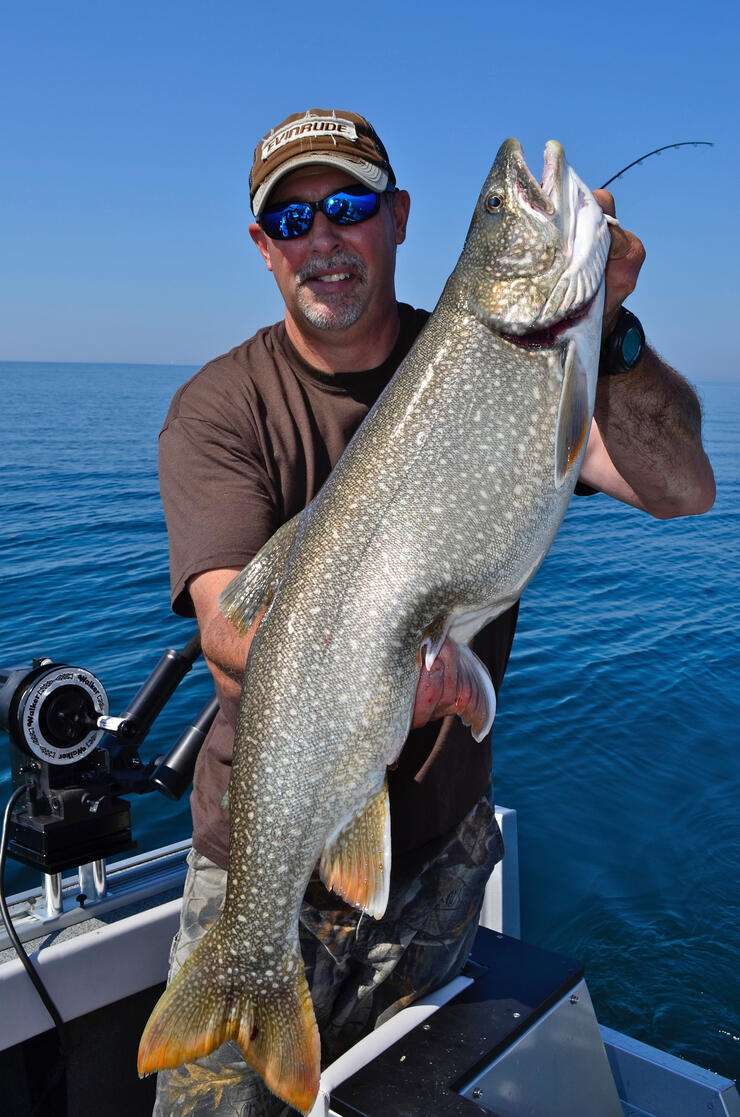
Because lakers favour water colder than 50°, they are often found on or near the bottom of deep water. Deepwater fish are easy to find with the help of sonar, and nothing catches more lake trout than the classic fishing setup known as the attractor rig.
What Are Attractors?
The term "trolling attractors" is a generic way of organizing a host of trolling hardware designed to get the attention of trout and other species. Some of the common attractors in use to target lake trout include "dodgers", "lake trolls or cowbells" and "fish flash". All of these attractors come in various sizes and, of course, colour options. No single trout attractor is the "go-to" answer every day on the water, and most good trout fishermen carry a selection of all three on board with them.
The best way to understand these attractors and how they work is to dive into a discussion of each and outline exactly how to rig and fish them.
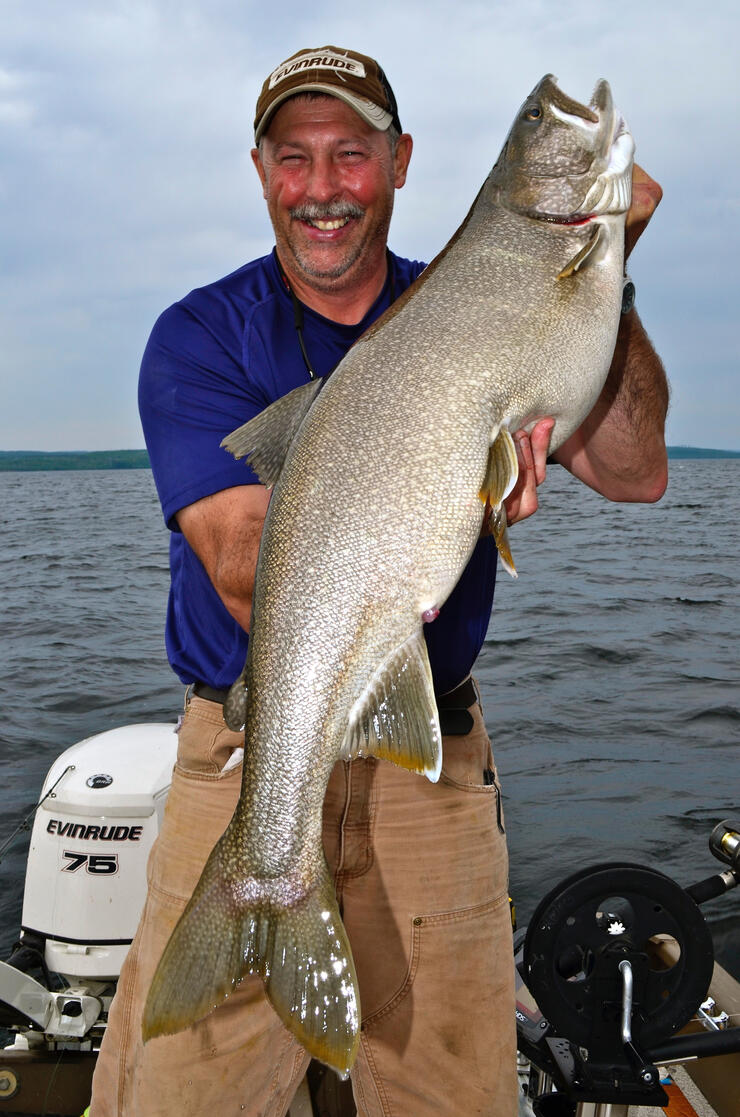
Dodgers
Sometimes considered old school, the common trolling dodger has been around and catching trout for decades. Dodgers come in various sizes, but the most common size among lake trout fishermen is the 000 dodger, which is about 5 - 1/8 inches long and around 1 - 1/2 ounces in weight. The Trout/Kokanee Dodger produced by Yakima is among the most popular brands in this attractor category. Luhr Jensen is another manufacturer that produces popular fishing dodgers.
Dodgers are fished in various ways for lake trout, but one of the most common means is to attach the dodger directly to the terminal end of a downrigger rod/reel combination loaded with a 20- to 25-pound test monofilament line. An 18- to 24-inch leader is added to the back of the dodger and terminated with a trolling fly, Spin-N-Glo or spoon.
This rig is set back behind the boat 10 to 20 feet, attached to the downrigger line release and lowered until the downrigger weight is just skipping on the bottom. A trolling speed of 1.7 to about 2.0 MPH is usually best when trolling dodgers.

Cowbells
Another old-school trout trolling trick is cowbells or lake trolls. These attractors are a series of blades that rotate on clevises, giving off amazing amounts of flash and vibration in the water. The typical cowbell rig is 30 to 50 inches in length and starts with a plastic or metal keel attached to a wire leader material that in turn is dressed with five blades of varying size and colour.

Used in much the same way as a dodger, the most common way to use lake trolls is by attaching them directly to a downrigger rod and then adding a 12- to 18-inch leader and terminating the rig with a trolling spoon or Yakima Spin-N-Glo. Because a cowbell rig doesn't impart any action to the trailing lure, normally, flies are not used in combination with these attractors.
This rig is fished 20 to 50 feet behind a downrigger ball and presented either on the bottom or suspended in the water column, depending on where trout are turning up on the sonar unit. Again, the biggest manufacturers in the lake troll category are Yakima and Luhr Jensen.
Fish Flash
The new kid on the block is an attractor called the Fish Flash, produced by Yakima. These attractors are unique in that they spin on a center axis and produce lots of flashes, but without all the drag and resistance associated with dodgers and lake troll rigs.
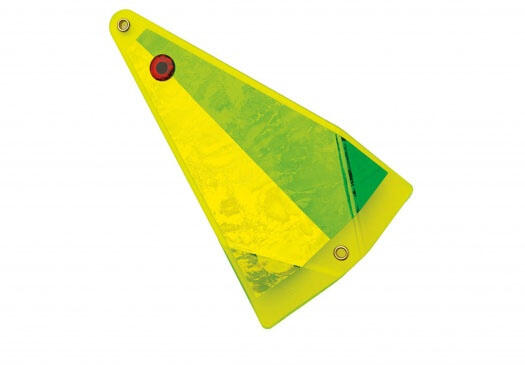
Fish Flash comes in 4-, 6-, 8-, and 10-inch sizes and these attractors are triangular with a ball bearing swivel on both ends. One of the most common ways to rig a Fish Flash is by attaching one directly to the end of a downrigger rod and then adding a 36- to 72-inch leader behind the Fish Flash and terminating with a spoon, Spin-N-Glo or wobbling crankbait.
Because Fish Flash produces much more flash than other attractors, a longer leader between the attractor and the lure is required. Also, similar to cowbells, the Fish Flash only spins in the water and imparts no action to the trailing lure, making it necessary to use baits with built-in action like spoons, crankbaits and Spin-N-Glos.
The most common way to rig a Fish Flash is again 10 to 50 feet behind a downrigger ball. Fish Flash is often fished tight to the bottom. The object is for the rotating Fish Flash to actually touch the bottom and stir up silt to simulate lakers feeding actively on the bottom.
Creative Rigging Options
While a downrigger is the most common tool used to present dodgers, lake trolls and Fish Flash, all three of these attractors can also be fished in combination with diving planers like the Lurk Disco Diver (formerly called the Deeper Diver) which are used to get these rigs down and also a little out to the side of the boat.
Because these attractor rigs are fairly heavy, the most common size divers are 107 mm and 124 mm. Most anglers set these divers on a No. 1 or No. 2 setting to get them deep and slightly out to the side of the boat. A heavy-action "diver rod" equipped with a line counter reel and 30- to 40-pound test super braid line is normally used to fish these diving planers.
Rigging an attractor to a diving planer gets a little confusing as there are countless options available. When using a dodger, a leader of 50 to 72 inches is tied between the diver and the dodger and then behind the dodger, a second leader of 18 to 24 inches is added with a spin-n-glo or spoon terminating the rig.

When rigging a diver with a cowbell, this attractor is attached directly to the back of the diver and terminated like before with a 12- to 18-inch leader and a spoon, or Spin-N-Glo.
The Fish Flash version is rigged similarly in that the Fish Flash is attached directly to the back of the diver, then a 50- to 72-inch leader is added and terminated to a spoon, Spin-N-Glo or wobbling crankbait.
Throw The Kitchen Sink At Them
Interestingly, one of the most productive lake trout trolling attractors is a setup that literally throws the kitchen sink at the fish. This rig starts with a 124 mm diver set on the No. 1 setting. Next, a 6- or 8-inch Fish Flash is attached directly to the back of the diver with a heavy-duty snap. Then a leader of 50 to 72 inches is added, which in turn is attached to a 000-size dodger with an 18- to 24-inch leader terminated to a spin-n-glo. This ungainly rig stretches out in the water nearly 10 feet, but when fished in connection with the bottom, it can literally be a lake trout harvesting machine.
When a fish is hooked on this "kitchen sink," rig the angler must back up in the boat in order to get the fish close enough to the net! All that gear in the water has considerable resistance, but it catches lake trout unlike anything else.
The Perfect Lake Trout Trolling Setup
In any trolling situation, it's important to get as many lines as practical in the water. In the case of trolling trout with attractor rigs, a four-rod setup is considered ideal. On the port side of the boat, one line is fished on a downrigger and a second is fished on a diving planer. On the starboard side of the boat, the same combination is used. When all four lines are fished in contact with the bottom, this simulates a school of lakers actively feeding on the bottom and stirring up sediment. It's common to have two or even three fish hooked at a time when trolling attractor rigs.
On bigger boats, some anglers will add a third downrigger positioned in the middle of the boat and stack two divers per side of the boat by fishing one diver on super braid and a second on a wireline that fishes deeper with less line out.
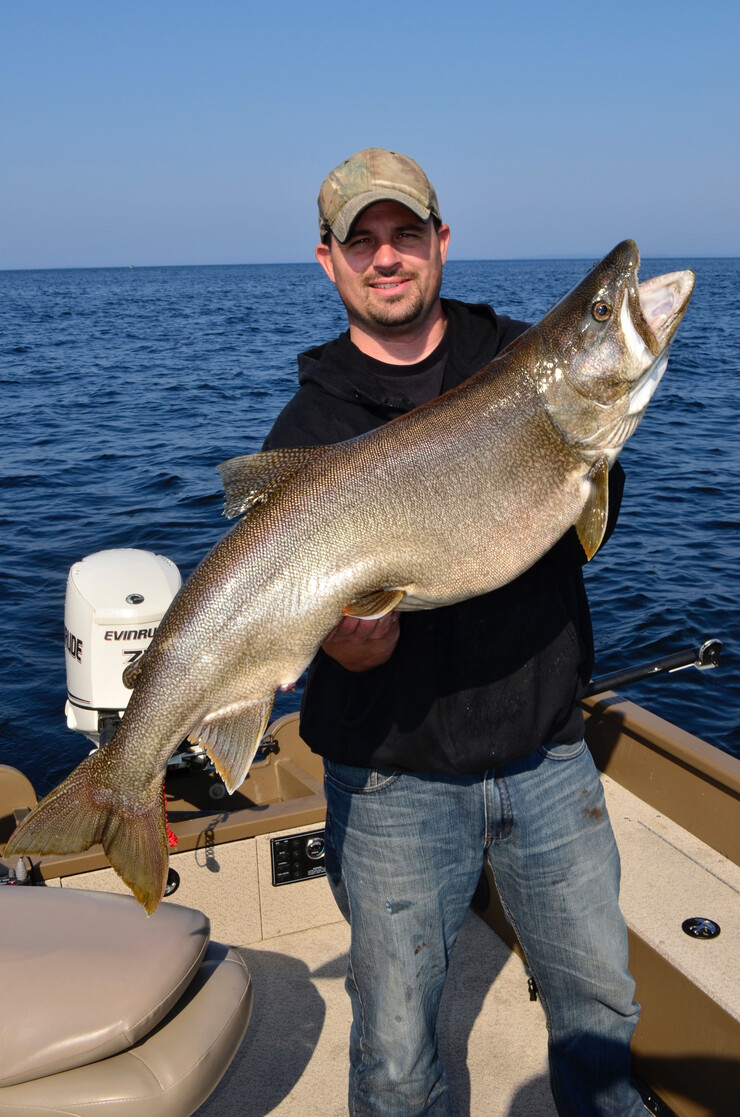
Summing It Up
Trolling with attractor rigs requires using downrigger rods, diver rods, line counter reels and stout lines. Because lake trout average 10 pounds in size and often grow to 20, 30 and even 40 pounds, it pays to gear up with tackle adequate for the job.
Most trout trollers use fluorocarbon line as leader material, and depending on the rig being used, line sizes in the 17- to 30-pound test range make the most sense. Lake trout are truly the denizens of the deep, and attractor rigs are how anglers "in the know" catch these fish day in and day out.
Recommended Articles

The Group of Seven in Algoma

9 Facts to Know about the Agawa Canyon Tour Train


